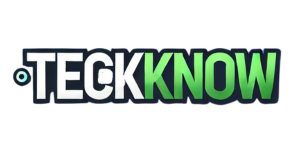JAKARTA, teckknow.com – In today’s digital age, an effective IT framework is essential for businesses of all sizes. It serves as the backbone of an organization’s technology strategy, ensuring that all IT components work harmoniously to support business goals. An IT framework provides a structured approach to managing technology resources, processes, and policies, ultimately driving efficiency, security, and innovation. In this article, we will explore the importance of an IT framework, its key components, and how it can lead to success for any business.
What is an IT Framework?
An IT framework is a comprehensive structure that outlines the processes, tools, and standards necessary for managing an organization’s information technology. It encompasses various aspects, including:
- Governance: Establishing policies and procedures for IT decision-making and accountability.
- Architecture: Defining the technical infrastructure and systems that support business operations.
- Security: Implementing measures to protect data and IT assets from threats and vulnerabilities.
- Service Management: Ensuring that IT services are delivered efficiently and meet the needs of the business.
Why Every Business Needs an IT Framework
1. Enhanced Efficiency
An IT framework streamlines processes and standardizes operations, reducing redundancy and improving efficiency. By clearly defining roles, responsibilities, and workflows, organizations can minimize confusion and enhance productivity.
2. Improved Decision-Making
With a structured IT framework, businesses can make informed decisions based on accurate data and established protocols. This leads to better resource allocation, project prioritization, and strategic planning.
3. Increased Security
A robust IT framework incorporates security measures and best practices to safeguard sensitive information. By implementing policies for data protection, access control, and incident response, businesses can mitigate risks and comply with regulatory requirements.
4. Scalability and Flexibility
As businesses grow, their IT needs evolve. An effective IT framework allows for scalability, enabling organizations to adapt to changing demands without compromising performance. This flexibility is crucial for staying competitive in a rapidly changing market.
5. Alignment with Business Goals
An IT framework ensures that technology initiatives align with overall business objectives. By integrating IT strategy with business strategy, organizations can leverage technology to drive growth, innovation, and customer satisfaction.
Key Components of an IT Framework
1. IT Governance
IT governance establishes the policies and processes for decision-making regarding IT investments and initiatives. It ensures that IT aligns with business goals and that resources are used effectively.
2. IT Architecture
This component defines the structure and organization of IT systems, including hardware, software, networks, and data management. A well-designed architecture supports scalability, integration, and interoperability.
3. IT Security
Security measures are critical to protecting IT assets from cyber threats. This includes implementing firewalls, encryption, access controls, and regular security audits to identify vulnerabilities.
4. IT Service Management (ITSM)
ITSM focuses on delivering and managing IT services to meet business needs. This includes incident management, problem management, change management, and service level management, ensuring that IT services are reliable and responsive.
5. Performance Measurement
Establishing key performance indicators (KPIs) allows organizations to assess the effectiveness of their IT framework. Regular monitoring and reporting help identify areas for improvement and ensure continuous alignment with business objectives.
Implementing an IT Framework
1. Assess Current IT Environment
Begin by evaluating your organization’s current IT landscape. Identify strengths, weaknesses, and gaps in existing processes, systems, and security measures.
2. Define Goals and Objectives
Establish clear goals for your IT framework that align with overall business objectives. This will guide the development and implementation of the framework.
3. Develop Policies and Procedures
Create comprehensive policies and procedures that outline how IT resources will be managed, governed, and secured. Ensure that these documents are communicated to all stakeholders.
4. Invest in Training and Resources
Provide training for employees to ensure they understand the new framework and its importance. Invest in the necessary tools and technologies to support the implementation.
5. Monitor and Adjust
Regularly review the effectiveness of the IT framework and make adjustments as needed. Continuous improvement is key to maintaining alignment with business goals and adapting to changing technology landscapes.
Conclusion
An effective IT framework is essential for any business seeking to thrive in the digital era. By establishing a structured approach to managing technology resources, organizations can enhance efficiency, improve decision-making, and ensure security. As technology continues to evolve, having a solid IT framework in place will enable businesses to adapt, innovate, and succeed in a competitive landscape. Embrace the power of an IT framework and lay the foundation for long-term success.
Boost Your Proficiency: Learn from Our Expertise on Technology
Don’t Miss Our Latest Article on Digital Wallets: Simplifying Online Transactions!
